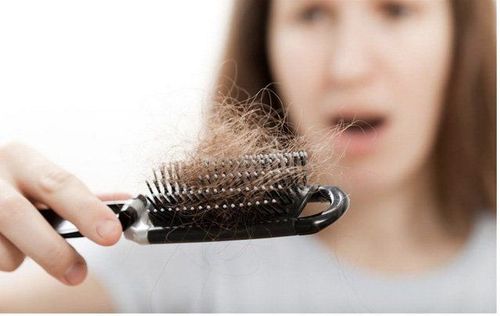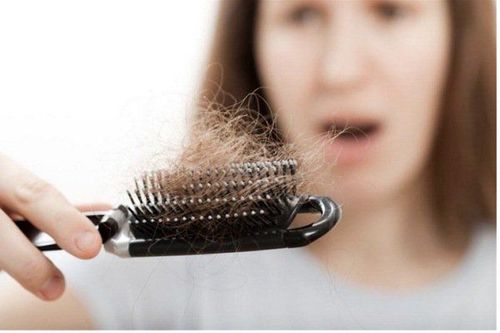This is an automatically translated article.
Hereditary hair loss with age is the most common cause of baldness. Many people feel no problem with baldness, let it progress naturally and without concealment. Others use methods such as styling their hair, applying makeup, and wearing hats or scarves to cover them up. And the rest go to the doctor for treatment to prevent hair loss and restore hair growth.
1. Causes of hair loss
Each person loses about 100 hairs a day, but on the outside, the hair does not appear to be thinning, because along with hair loss, new hairs are growing. Baldness occurs when the balance between hair loss and hair growth is disrupted, or when hair follicles are destroyed, replaced by scar tissue.
Hair loss is often associated with one or more of the following factors:
Family history (genetics): this is the most common cause of hair loss, known as hereditary male pattern baldness or hereditary female pattern baldness. It usually occurs gradually with age. Hormonal changes and medical conditions: There are many different conditions that cause temporary or permanent hair loss, including hormonal changes caused by pregnancy, childbirth, menopause, and thyroid problems. Conditions include alopecia areata (alopecia areata), scalp infections (such as tinea versicolor), or trichotillomania. Medications and Supplements: Hair loss can be an unwanted effect of certain medications, such as those used to treat cancer, arthritis, depression, heart conditions, gout, and obesity. blood pressure. Radiation therapy to the head area: After radiation therapy, hair may not grow back as it was. Some hair treatments and styling: certain hair straightening and styling methods, such as pigtails or cornrows, can cause hair loss, called traction alopecia. traction alopecia). Treating hair with hot oil can lead to folliculitis and lead to hair loss. If a scar forms, the hair loss will be permanent.
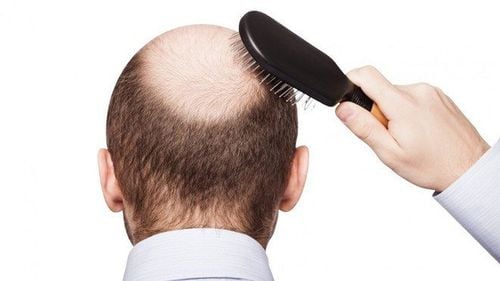
Hói đầu có thể do tác dụng phụ của các loại thuốc điều trị ung thư
2. Risk factors for hair loss
There are several risk factors that increase the likelihood of hair loss, including:
A family history of baldness. Age. Lose a lot of weight. Certain medical conditions, such as diabetes or lupus. Stress.
3. Symptoms of hair loss
Hair loss can appear in many different forms, depending on the cause of the hair loss. Hair loss can come on suddenly or gradually, affecting only the scalp or the entire body. Hair loss can be temporary or permanent.
Signs and symptoms of hair loss include:
Hair thinning at the top of the head: this is the most common type of hair loss, affecting both men and women as they age. In men, hair loss usually begins at the forehead, following an M-shaped line. In women, there is usually no hair loss on the forehead, but there will be a place where the hair loss gradually expands. Patchy baldness: some people develop natural hair loss in patches the size of a dime. This type of hair loss usually affects only the hair-bearing scalp, but sometimes also occurs in the beard or eyebrows. In some cases, the skin may be itchy or painful before the hair starts to fall out. Sudden hair loss: A physical or emotional shock can cause hair loss. Bundles of hair will fall out when performing actions such as combing or washing hair, even hair can fall out of hands just by gently stroking the hair. This type of hair loss usually results in thinning of the entire hair rather than creating bald patches. Generalized alopecia: Certain conditions and treatments, such as cancer chemotherapy, can lead to total body hair loss. However, the hair will usually grow back after that. Round patches of skin spreading over the scalp: this is a sign of a fungal infection, accompanied by signs of hair loss, redness, and sometimes oozing.
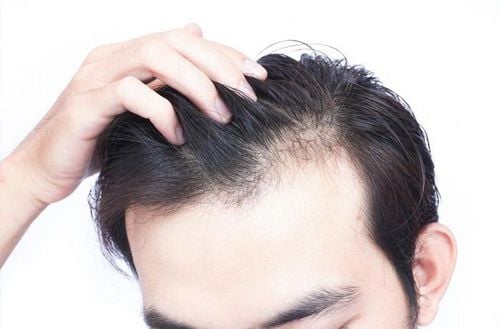
Hói đầu đôi khi cũng xuất hiện ở râu hoặc lông mày
4. When to see a doctor
See a doctor if hair loss affects psychologically for treatment. If there is sudden onset of hair loss or patchy hair loss, or when you wash or comb your hair, you notice more hair loss than usual, see your doctor, because sudden hair loss could be a sign of an underlying medical condition. there.
5. Diagnosis of hair loss
The doctor will take the medical history, history, physical examination and may order some of the following tests:
Blood tests: can help find medical problems related to hair loss. Pull test: the doctor will gently pull a handful of hair to see the extent of hair loss. Scalp biopsy: to check the roots of the hair to see if an infection is the cause of the hair loss. Look under an optical microscope: the doctor will look at the hair cut at the root, helping to find abnormalities.
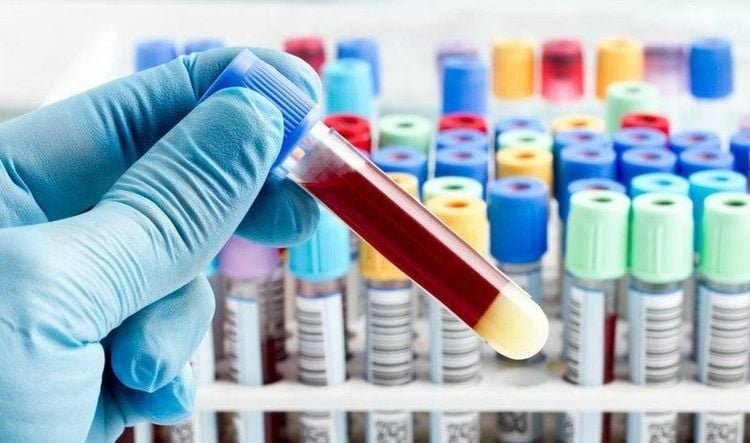
Xét nghiệm máu là phương pháp chẩn đoán hiệu quả vấn đề rụng tóc
6. Hair loss treatment
Hair loss treatment aims to stop hair loss and let hair grow back, or at least slow down hair loss.
If hair loss is caused by an underlying medical condition, then the cause needs to be addressed. If hair loss is caused by medication, then consider using that drug.
Treatments for hair loss include medication and surgery:
Commonly used treatments are minoxidil (over-the-counter, for both men and women), finasteride (prescription, for men) , dutasteride (for men), oral contraceptives, and spironolactone (for women). Hair transplant surgery. Low-dose laser therapy: has been approved by the Food and Drug Administration (FDA) in the United States, but more research is needed on its long-term effectiveness.
If you have unusual symptoms, you should be examined and consulted with a specialist.
Please dial HOTLINE for more information or register for an appointment HERE. Download MyVinmec app to make appointments faster and to manage your bookings easily.
Articles refer to the source: mayoclinic.org




